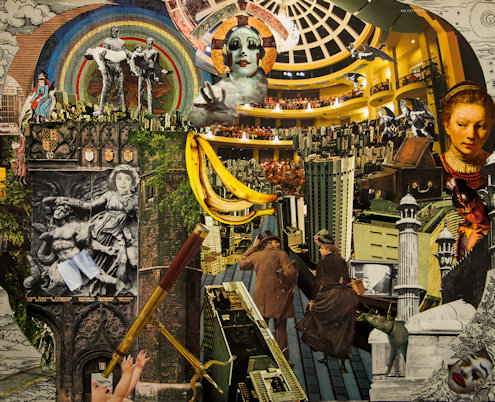 One week after the Las Vegas shootings, I am locked inside a dark room at the Cache County Jail. Country music plays from an unseen source. Uniforms hang on pegs, an outdated calendar posted nearby. On a worn pleather couch, I sit with Megs, my partner this week for the meditation classes I help facilitate for the female inmates. Out the bank of windows that open onto the hall and through the steel-set windows on the other side, I watch prisoners move about in their wedge-shaped pods. Some rest in their beds—thin mattresses, sheeted, white like the walls—while others pace in their plain jumpsuits. No windows to the outside. No wall art. The harsh fluorescent lighting never goes off. Blue is the new black in Logan, Utah, and here the day never ends.
One week after the Las Vegas shootings, I am locked inside a dark room at the Cache County Jail. Country music plays from an unseen source. Uniforms hang on pegs, an outdated calendar posted nearby. On a worn pleather couch, I sit with Megs, my partner this week for the meditation classes I help facilitate for the female inmates. Out the bank of windows that open onto the hall and through the steel-set windows on the other side, I watch prisoners move about in their wedge-shaped pods. Some rest in their beds—thin mattresses, sheeted, white like the walls—while others pace in their plain jumpsuits. No windows to the outside. No wall art. The harsh fluorescent lighting never goes off. Blue is the new black in Logan, Utah, and here the day never ends.
“You’re not safe,” the guard had said as we walked down the hallway to the classroom. A handcuffed inmate, held by two guards, was being pushed into a room, while another inmate carried his balled possessions down the hall, flanked by guards made larger by the guns at their sides. Shouts came from mouths we could not see.
“We need you in here.”
She had showed us the couch, the one facing a row of computers where guards presumably sat to watch the cameras, the prisoners, reruns of “Duck Dynasty.” To the side of one screen, the one filled with gridded squares eyeing every corner of the jail, sat a boulder-sized Big Gulp, lettering faded from use.
When the guard left us, she locked the door behind. Now, from the inside of Foucault’s panopticon, we look out at those held in. “Don’t Let Nevada be excuse to disarm us,” reads the website left open. We sit in darkness.
Two weeks after the shootings, I am running down the road in the morning dark. No moon, no lamplight. Black like the sky above, the pavement only exists beneath my feet through faith. I see little before me. The occasional shooting star streaks across the sky—so very bright in the cloak of dark that I squint. Early fall in Logan brings cold temperatures and the smell of fallen leaves. My mind prioritizes my day, the done and undone, removing me from my footfalls and my run.
I hear the cry at the same moment that I instinctively leap the black lump on the road. The sound comes from the ground, the clear call of an animal in pain.
And I continue on.
Each stride takes me farther from what can only be a cat who has been hit by a car. Unable to flee my stride, it calls to me instead. I try to make myself turn around and then reason against the action. How would I carry it home, to the vet, to its owner? When I reach the hill at the midpoint of my run, I welcome the pounding in my lungs, the seizing in my throat. It’s just like crying.
I’d like to say that when Megs and I finally made it to the classroom to sit with the women who came for meditation we created a profound space of healing. But not that day. That day, two of the women fidgeted, complained. One refused to close her eyes. Two chirped and giggled as I led them on a guided meditation where I invited them to envision the fluorescent lights above us as the sun, warming the crowns of our heads. But the sun doesn’t buzz and the jail is kept cold; even my own mind refused to quiet and still.
I’d like to say that as I circled back toward home that morning and passed the place in the road where the cat had cried out, I no longer saw a lump and instead heard a meow from the field of corn nearby. But it was a hawk I heard, not a cat, and I refused to look at the ground.
In the jail orientation, we are told that the officers have sworn to give their life to save us, the civilians, first. Second, themselves, then the suspects or inmates. This, the Priority of Life. In fact, we are warned, we put the officers at risk every time we come.
With all that light, fluorescent rods seething twenty-four hours a day, you would think the ability to discern whom to save and how would be readily apparent. Yet I left a cat to die and those shooting stars, just rocks.
__
Jennifer Sinor is the author of three books, most recently Letters Like the Day: On Reading Georgia O’Keeffe and Ordinary Trauma: A Memoir. The recipient of the Stipend in American Modernism as well as nominations for the National Magazine Award and the Pushcart Prize, Jennifer teaches creative writing at Utah State University where she is a professor of English.
Artwork by John Gallaher

1 comment
Savannah Province says:
Aug 18, 2018
I love this.